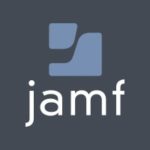Mobile device management software remotely controls all of an enterprise’s mobile devices used for work or data processing. It’s particularly important for companies that have multiple remote office locations or work-from-home employees. Without a unified endpoint management or MDM solution, enterprises are limited in their ability to provide flexible remote work environments and further their business during emergencies that require remote network and computer access.
MDM software allows enterprises to update devices and provide applications to workers who need them. It also increases security as company data is geographically dispersed and goes beyond physical protection.
Jump to:
- Features of Mobile Device Management Software
- MDM Software and Security
- Top Mobile Device Management Software
- How to Buy an MDM Solution
Features of Mobile Device Management Software
MDM solutions need to be flexible and secure, giving enterprises a wide range of remote management capabilities. Common mobile device management features include:
- Remotely configuring devices
- Containerizing company data, which separates company resources from all other parts of the device and prevents employees from moving company data to their personal apps
- Tracking all devices’ locations through GPS or other location data
- Remotely locking devices that have been lost or stolen
- Viewing device data such as serial numbers and current operating system
- Viewing application usage
- Implementing password and security features
The last feature is important because bring your own device (BYOD) policies complicate business security; employees want to retain autonomy over their personal devices while still using those personal devices to work. And, many companies want employees to be able to use their personal devices for work — it saves the business money and its convenience allows employees to be more productive.
However, BYOD threatens company security because employees don’t follow the same safety protocols on their personal devices as they would have to on company laptops or phones. If an attacker breached a personal device through downloaded malware or public Wi-Fi, they could realistically access company data, too. This is why many MDM solutions containerize company data.
Also Read: Top RMM Software | Remote Monitoring & Management Tools
MDM Software and Security
Mobile device management software presents risks to enterprises at the same time that it offers flexibility and safety features. MDM software risks include:
- BYOD threats, such as weak passwords and unsafe Wi-Fi networks
- Requiring third-party app installations and integrations that might be insecure
- Employee access to company information after they’ve left the company
- Lost or stolen devices
- Potential bugs within the software, which if exploited by attackers could cause an infection for all devices with the agent installed.
MDM software mitigates risks by:
- Containerizing company data so it’s segmented from personal applications
- Requiring strong passcodes and offering password creation and reset features
- Offering regulatory compliance features like encryption
- Wiping former employees’ devices
- Remotely locking a missing device
Compromised software bugs and potential exploits are risks that all businesses take when they use MDM software. Choosing solutions with multiple security precautions, such as encryption management and identity access management, is a first step to MDM safety.
Also Read: Remote Work and Mobile Device Security
Top Mobile Device Management Software
The following seven solutions offer management features for enterprises that need to automate device deployment and remote control.
Jamf Pro
Best solution for all-Apple SMBs
Jamf Pro is a made-for-Mac MDM solution that provides remote management for hundreds of devices and real-time support to businesses with limited IT resources. It’s an especially popular software within the education field, allowing schools and universities to easily deploy apps for video conferencing and provision devices like tablets. For smaller enterprises and educational facilities that don’t have large dedicated IT teams, Jamf Pro offers Apple IT management.
Jamf makes regular software updates and is quick to address Apple software changes so that the product will continue working with current operating system versions. Jamf Pro also has a lively and helpful user community, Jamf Nation, for customers to discuss the software and note problems. Jamf actively monitors the community, and if multiple people are encountering the same issue, Jamf will look for a solution.
Key Differentiators:
- Great customer support
- A designated technician assigned to each customer for onboarding
- Remotely pushing updates and changes to devices
- Managed iOS device and app use
- Automatic device wipes and resets
- Device segmentation and grouping
- Security features such as locking down assets
- Self-service app store
Cons:
- Not a good solution for large businesses that use other operating systems, such as Windows and Android
- Steep learning curve, and hard to set up for new users
- Challenging to deploy Adobe Creative Cloud because it’s too large, though there is a lengthy and difficult workaround
ManageEngine Mobile Device Manager Plus
Best solution for businesses that need to track both iOS and Android phones
ManageEngine Mobile Device Manager Plus is a cloud-based MDM for iOS and Android devices. Using ManageEngine, enterprises can apply policies, enroll devices, and deploy applications. ManageEngine helps businesses disable any lost devices and control company asset movement.
The Fence Repository allows customers to choose from a collection of geo-fences, which helps businesses stay compliant with geographical data restrictions. ManageEngine also integrates with Apple Business Manager, formerly Apple DEP, through which businesses automate Apple device deployment. This feature is useful for large enterprises using hundreds or thousands of Apple phones, tablets, computers, and TVs.
Key Differentiators:
- Asset geo-tracking
- Custom profiles for devices
- User-friendly, customizable interface
- Geo-fencing and fence repository
- Restore configurations from a backup
- Multi-app kiosk mode
- Reasonable costs
Cons:
- Customers have to wait for long support response times, especially on the phone
- Web interface can be clunky and confusing
Cisco Meraki Systems Manager
Best network and device monitoring solution
Cisco Meraki Systems Manager is an endpoint mobility management solution: it’s a device management platform that doubles as an MDM because of its native integration with Meraki networking products. Meraki is a great catch-all solution for small and medium-sized enterprises if they need both remote monitoring features and mobile device management. Meraki provides cloud-based network visibility for both on-premises and remote hardware.
When Systems Manager is integrated with Meraki network access points, admins can restrict network access to only devices that have the solution installed. System Manager can integrate with other Cisco networking products as well as Meraki. System Manager software can also run on mobile devices.
Key Differentiators:
- Configurations pushed to network devices
- URL whitelisting and DNS lookups
- Network access point and switch management
- Device locking and update pushing
- Geo-fencing feature for restricting device use outside geographical limit
- Easy-to-use web administration portal
- Good software deployment and application management
- Managing bandwidth use
Cons:
- High costs overall and rising license costs
- Problems with whitelisting URLs
Miradore
Best for EU customers with IT personnel
Miradore’s MDM solutions allows users to deploy configuration profiles to devices and secure devices through passcode policies and locking. Businesses can view each device’s location, serial number, and most recent report date; they can also view a list of applications on the device and track its activity.
Miradore’s security features include automated patch management, storage encryption management, and selective device wiping, which allows users to only wipe company data and leave personal data on the device. Data wipes are required for GDPR compliance, one of the most important legal requirements for enterprises that access company data on remote devices.
Miradore offers a free version of the software for small businesses, though its features are limited and don’t include location services or application management.
Key Differentiators:
- Automated device enrollment
- Automated policies for groups of devices
- Easy-to-navigate interface
- Quick device enrollment
- Company data containerization for Android devices
- Blacklisting apps
- Single-app kiosk mode
- Easy to set up software
Cons:
- Users noted limited customer support, sometimes with no phone or live options
- User interface is clunky and dated, taking some customers time to navigate
Hexnode UEM
Best solution for technical customer support
Hexnode Unified Endpoint Management (UEM), also known as Hexnode MDM, supports a wide range of devices, from Android phones to Apple TVs. Hexnode allows enterprises to view a list of applications on a device, track the device’s activity and location, and lock it remotely. Hexnode also readily develops and adds new features to the software, including ones that users request.
Though Hexnode offers multiple useful MDM features to enterprises, customers spoke highly of the company’s customer service. Hexnode’s technical support team received multiple accolades, and though many remote management platforms have great customer support reviews, Hexnode received a proportionately large amount of praise for its chat feature, tech support, and readiness to help.
Key Differentiators:
- Kiosk mode feature
- Attractive, navigable management dashboard
- Intensive device and employee monitoring
- Policies applied to any device and to user groups
- Ease of enrolling new devices
- International device monitoring
- Multiple extensive knowledge articles for customer self-service help
Cons:
- Android support limited in lower-tier plans
- Enterprise and additional features are expensive
Citrix Endpoint Management
Best choice for large enterprises with a variety of operating systems
Citrix EM is a mobile endpoint solution for remote teams that are accessing virtualized environments. Citrix streamlines application access, giving remote employees a similar experience from home computers that they would have in office, while providing security so that business data is protected. Citrix supports macOS, iOS, Windows 10, Android, and Chrome OS, a wide variety of operating systems.
By installing Citrix EM’s receiver onto a device, employees have a virtual desktop and access to all of the company applications they need. Citrix simplifies IT admins’ job in large organizations where many remote devices are difficult to access and secure.
Key Differentiators:
- Identity and access management features
- Security controls for SaaS applications added to Citrix
- Queue of recent apps and files used
- Easy-to-use, configurable management console
- Remote device wiping
- Differentiation between corporate data and personal data on BYOD devices
- Remote login from any device or location
- Task updates with prioritization, impact, and description
Con:
Citrix software, endpoint devices, or applications sometimes lag, and opening links can slow the software
Rippling
Best for small enterprises that need one solution for onboarding employees
Rippling isn’t just device management software; it’s a human resources solution that offers payroll, benefits, documents, and time-off management. Rippling allows businesses to streamline onboarding tasks, including shipping new company devices to employees and managing their password creation and all applications. Rippling installs an app on each employee device that allows a company to remotely manage all computers and phones.
Through Rippling, businesses can order and ship devices, track and wipe lost devices, and track application use. Enterprises use Rippling to wipe and reassign devices to new employees and remotely install new applications that employees need.
Key Differentiators:
- Regulation-compliant password policy creation
- Intuitive, easy-to-use interface
- Employee identity access management
- Secure access to SaaS tools
- Integration with Cylance, a security app that uses AI to detect malware and viruses
- Encryption and key management
- Audit logs about actions on devices
- Remote app installation
Cons:
- As proprietary software, Rippling limits what prospective customers can view before signing up
- Rippling doesn’t support Linux computers
How to Buy an MDM Solution
Enterprises searching for mobile device management software should consider solutions that:
- Have responsive, knowledgeable customer support teams. Though not a perfect gauge, customer reviews will often accurately describe the quality of software providers’ technical support and service.
- Have a user interface and features that correspond to the enterprise’s needs. If a large company has an experienced IT team, a complex UI and steep learning curve isn’t necessarily a bad thing, because the company has the resources to make the most of that solution. A smaller business, though, will need an easy-to-use, intuitive interface that’s simpler to learn.
- Offer many device and application management features. Enterprises should be able to easily deploy apps for their employees to use on remote devices, view device information, and lock and wipe devices.
- Implement heavy security policies, such as encryption, anti-malware and antivirus integrations, and password creation.
Also Read: Best Enterprise Mobility Management Solutions & Software 2021









